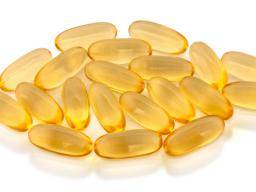Hirotaka Haro
Translational research of herniated discs: current status of diagnosis and treatment
Abstract
Lumbar herniated discs commonly occur in patients 20–40 years of age, and result in acute symptoms of shooting and intractable pain in the low back and/or lower extremities. However, the prognosis of these patients is considered to be very good. Moreover, 70 % of these patients have been reported to be free from sciatica at approximately 6 months after the first onset. Magnetic resonance imaging (MRI) studies have described the spontaneous resorption process of herniated discs, which is a major cause of the reduction of symptoms in patients. New advancements in MRI have recently been developed that have facilitated the examination of nerve tract fibers and identification of symptomatic nerve tissue. Furthermore, the mechanism underlying the resorption process of a herniated disc has been determined. Inflammatory cytokines such as TNF (tumor necrosis factor)-α, angiogenic factors such as vascular endothelial growth factor, and enzymes such as matrix metalloproteinases are intricately related to each other. In our previous studies, matrix metalloproteinase-7 (MMP-7) has been shown to play a crucial role in the initiation of herniated disc resorption. Therefore, we developed recombinant human MMP-7 for intradiscal therapy through an industry–university joint research program. We have already performed in vitro and in vivo experiments to confirm its efficacy; this therapy avoids the side effects associated with surgery, such as nerve tissue damage. Moreover, the phase 1/2 studies of recombinant human (rh) MMP-7 are currently ongoing in the United States, and careful monitoring is required for these clinical trials. In conclusion, patients with lumbar herniated discs may benefit from the development of a less invasive treatment for disc herniation, which can be applied even immediately after the onset of disease symptoms.
Introduction
Low back pain is the primary reason for patients visiting physicians in Japan. This condition ranks second among the complaints in the United States, following upper respiratory tract complaints [1]. Herniated discs (HD) account for 4 % of the total cases of mechanical low back pain, and occur in approximately 2.8 million patients annually. Patients with lumbar HD experience acute onset unilateral or bilateral lower extremity pain and numbness associated with the low back pain. However, 70 % of lumbar HD patients recover from sciatica within 6 weeks of its onset. Thus, considering the natural history of HD, the overall patient prognosis is good. However, an estimated 10 % of patients will experience continued pain and neurological deficits, and surgical intervention should be considered for these patients. A systematic review comparing surgical intervention and conservative management indicated that surgical intervention enables faster pain relief, compared to prolonged conservative treatment, during short-term follow-up, although no marked differences are noted during long-term follow-up.
Lumbar HD patients are primarily between 20 and 40 years of age, employed, and play an active role in society. To reduce the quality of life issues caused by surgical intervention, including microdiscectomy, more effective and less invasive treatments—which require less treatment time—need to be developed.
Development of a less invasive treatment for HD
Lumbar HD commonly occurs in patients aged 20–40 years with active lifestyles. These patients show acute onset of low back and/or lower extremity pain, which results in absenteeism from daily work. Thus, a less invasive treatment compared to microdiscectomy with microscopy or endoscopy is required.
Chemonucleolysis is a treatment that involves the administration of enzymes into the HD, and has been proposed as an alternative and less invasive approach to avoid surgery.
Chemonucleolysis causes the degradation of aggrecan and/or collagens, which results in the decrease of the HD matrix and water content, as well as a reduction in the pressure exerted by the HD on nerve tissues. Smith previously reported on the administration of chymopapain, derived from Carica papaya, into lumbar HD. Although its therapeutic effects have been well documented, chymopapain contains a wide range of substrates, such as aggrecan and collagens, which can lead to certain adverse side effects, including anaphylactic shock, subarachnoid hemorrhage, transverse myelitis, and discitis. Purified bacterial collagenase, derived from Clostridium histolyticum, has also been used for chemonucleolysis. A prospective randomized study using chymopapain and collagenase showed good and excellent outcomes 5 years after treatment in 72 % of the chymopapain group and in 52 % of the collagenase group [42]. In addition, a prospective randomized trial of 100 consecutive lumbar HD patients was performed to determine whether chemonucleolysis with chymopapain or standard discectomy showed better or improved outcomes. It was found that there were no differences between the two treatments at 1, 10–13, and 24–27 years after the treatment [43]. Thus, chymopapain—which had been recognized as a favorable chemonucleolysis reagent—was subsequently withdrawn as a treatment option owing to the associated complications.











